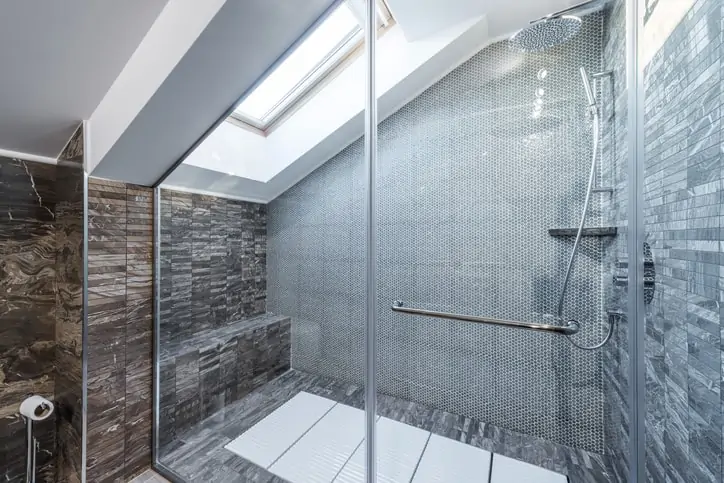
A bathroom remodel is a fantastic investment for your property. When you are working with professionals to plan out your bathroom design, you might want to consider replacing your old shower. A new shower will provide you with many advantages, while also helping to improve the safety and overall efficiency of your bathroom space. Your plumbing team will be able to help you plan and execute your shower replacement, from start to finish.
One of the top benefits of replacing your shower is that a new shower installation will dramatically improve the style of your bathroom. As you plan out your new shower design, you will also have the option of including innovative features, such as slip resistant flooring and a state-of-the-art enclosure. You can also improve your comfort by choosing a spa-like shower head that features several different settings. An experienced contractor will be able to help you create the luxurious shower that you have always wanted. Before choosing a bathroom shower fixture, you’ll need to consider a few factors, such as which spray style you want, as well as what your budget will allow. Other considerations include the size of your bathroom and what sort of shower fixtures are typically found in similar homes in your area.
Our shower fixtures freshen us up for the day ahead, warm our souls when we’re chilly, and give us a soothing pat on the back after a workout. A great shower fixture in the home can be a wonderful comfort, and we want them to perform well and last a long time. If you’re in the market for a new showering system, here’s what you need to know.
Shower Fixture Types
Showerheads fall into five general categories. Many have some adjustable features that let you select the spray pattern and the intensity of the jets.
Single-head spray showerheads are the familiar bulbous, adjustable nozzles that have been rinsing our collective bods for decades. Single-heads feature four or more individual nozzles that distribute the spray in patterns. The nozzles adjust with a small lever that changes the flow pattern from wide spray to concentrated streams.
Rain showers are large, flat heads that are suspended directly above the user and direct the spray straight down.
Dual and multiple showerheads feature more than one showerhead controlled by a single set of levers (or handles). A typical configuration is a fixed, wall-mounted showerhead paired with a handheld counterpart. In some instances, a diverter valve allows the user to operate either showerhead or both simultaneously.
Hand-held showerheads feature a single head sprayer attached to a flexible hose, good for washing hair and those hard-to-reach places. Hand-held showerheads are particularly useful for those with limited mobility, and those who might shower in a sitting position.
Body sprays have multiple spray heads integrated into the shower wall. The heads themselves are either compact nozzles, or are flat and nearly flush to the wall surfaces. The possible configurations are limited only by your imagination and your home’s water pressure—you’ll need at least 45 psi (pounds per square inch) delivered through three-quarter inch supply lines.
Shower Fixture Finishes
Showerheads, handles and valve controls come in many finishes including polished chrome, brushed chrome, polished nickel, brushed nickel, hammered nickel, stainless steel, bronze, brushed bronze, oil-rubbed bronze, polished brass, black and white. If a consistent look for your bathroom finishes is important to you, select all your bath fixtures, faucets and accessories from the same manufacturer.
Remember that polished finishes are elegant but require constant upkeep to keep them looking bright and free from spots. Brushed and matte finishes are better at hiding water spots and fingerprints.
Saving Water
Showering accounts for about 17 percent of all water usage in the average U.S. home, or about 30 gallons per day according to the Environmental Protection Agency (EPA). That substantial usage was a focus of the 1992 Federal Energy Management Act requiring new showerhead fixtures to have a maximum flow rate of 2.5 gallons per minute (gpm).
The EPA expanded its water conservation efforts with the WaterSense program. Developed in 2005, WaterSense sets standards of water flow volume for various fixtures, including showerheads. Shower fixtures that earn the WaterSense label must have flow rates of no more than 2.0 gpm. The program includes standards of performance, so that showers and other fixtures provide good, strong flows while conserving water.
A further benefit of WaterSense showerheads is a reduction in the amount of hot water consumed. The EPA estimates that replacing traditional, 2.5 gpm showerheads with WaterSense-certified heads will reduce energy bills by an average of 300 kilowatt hours per household annually.






